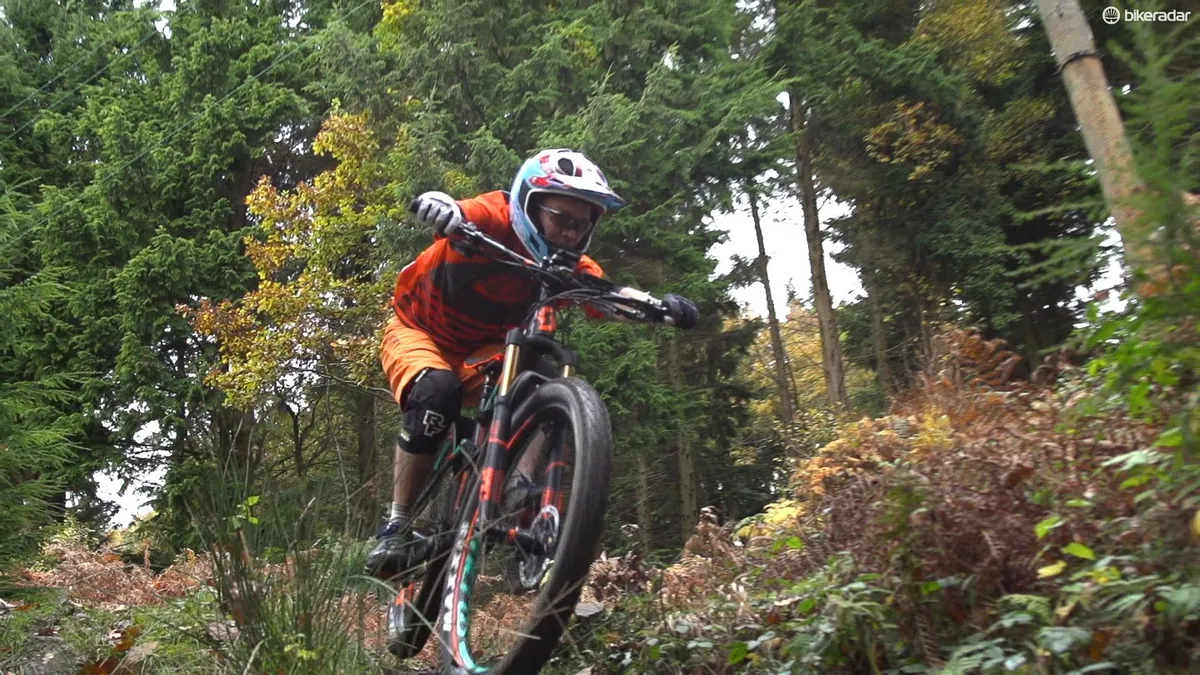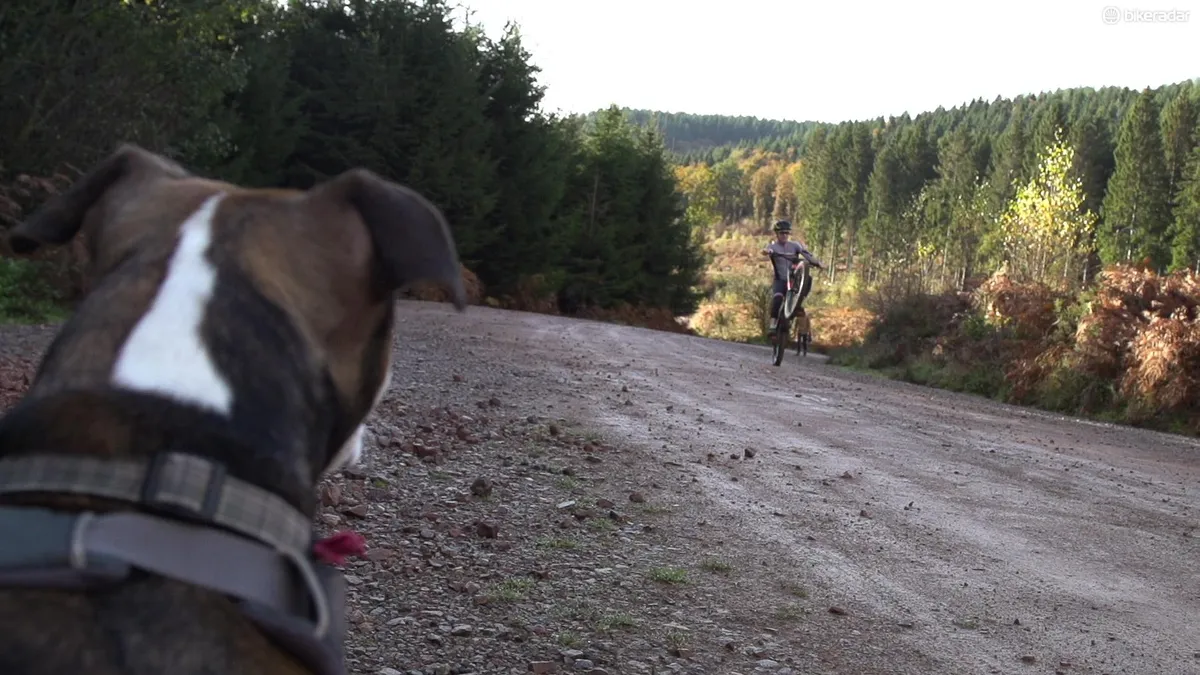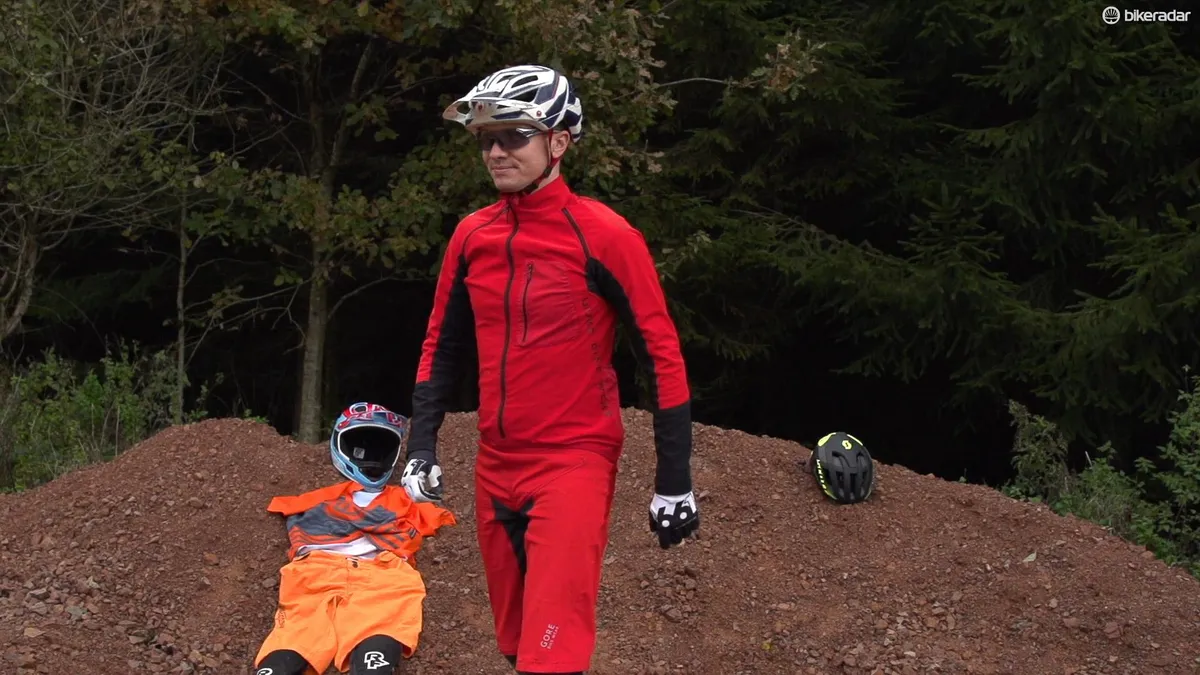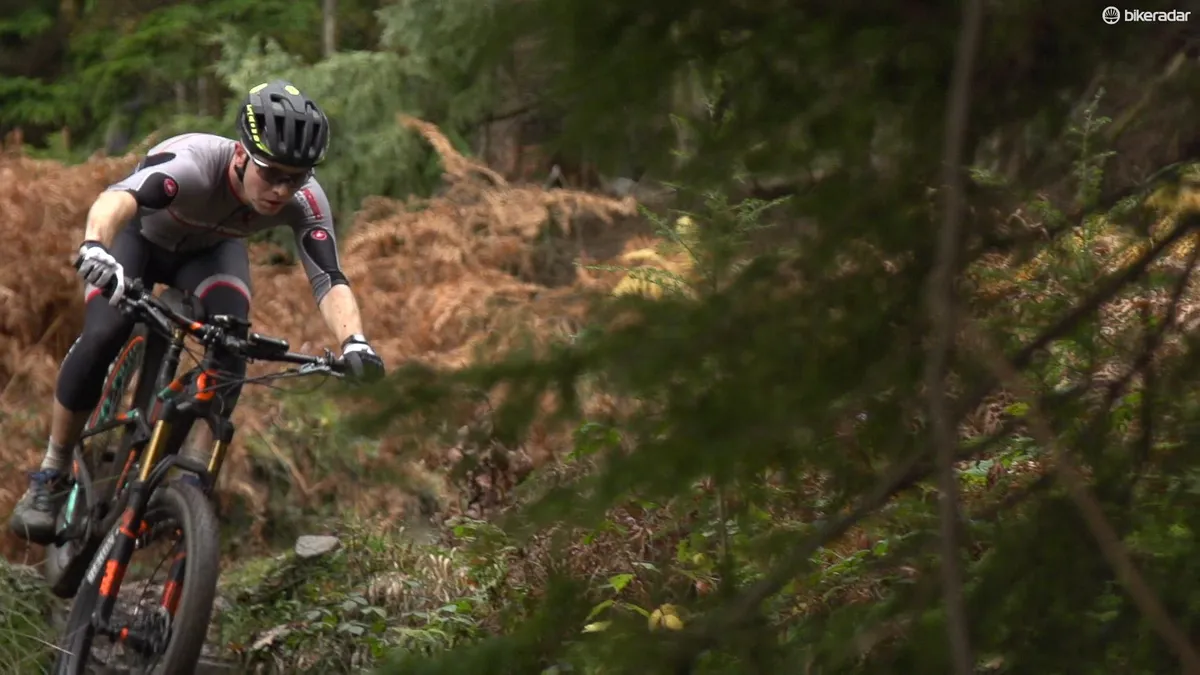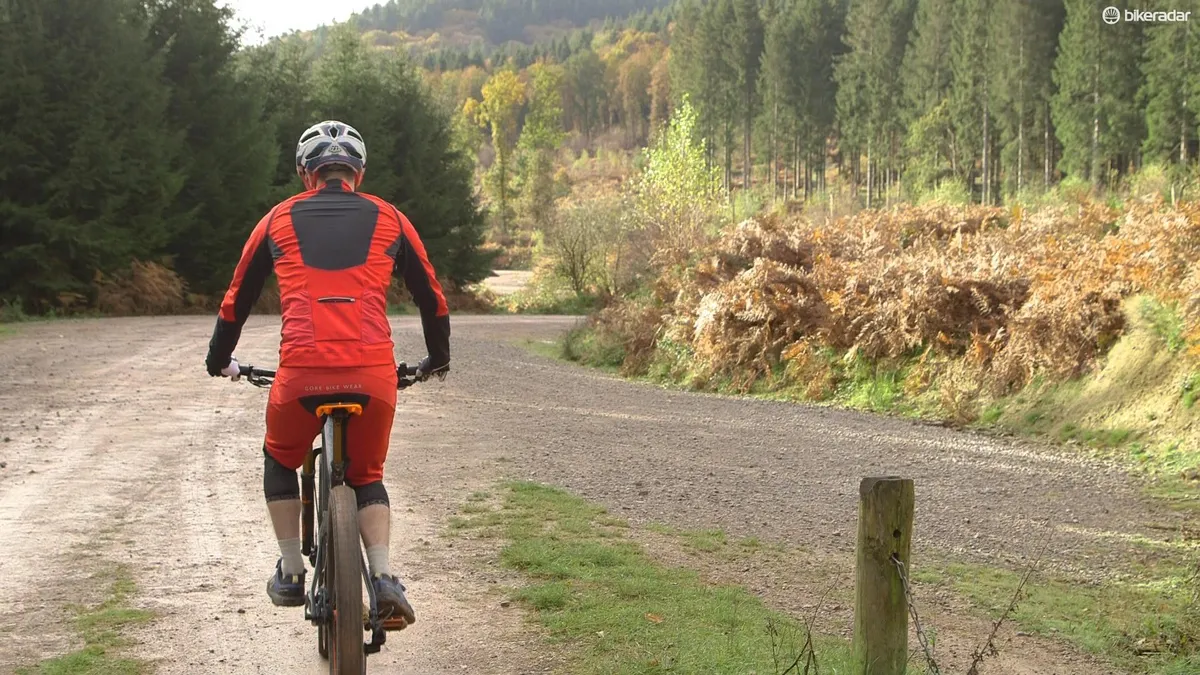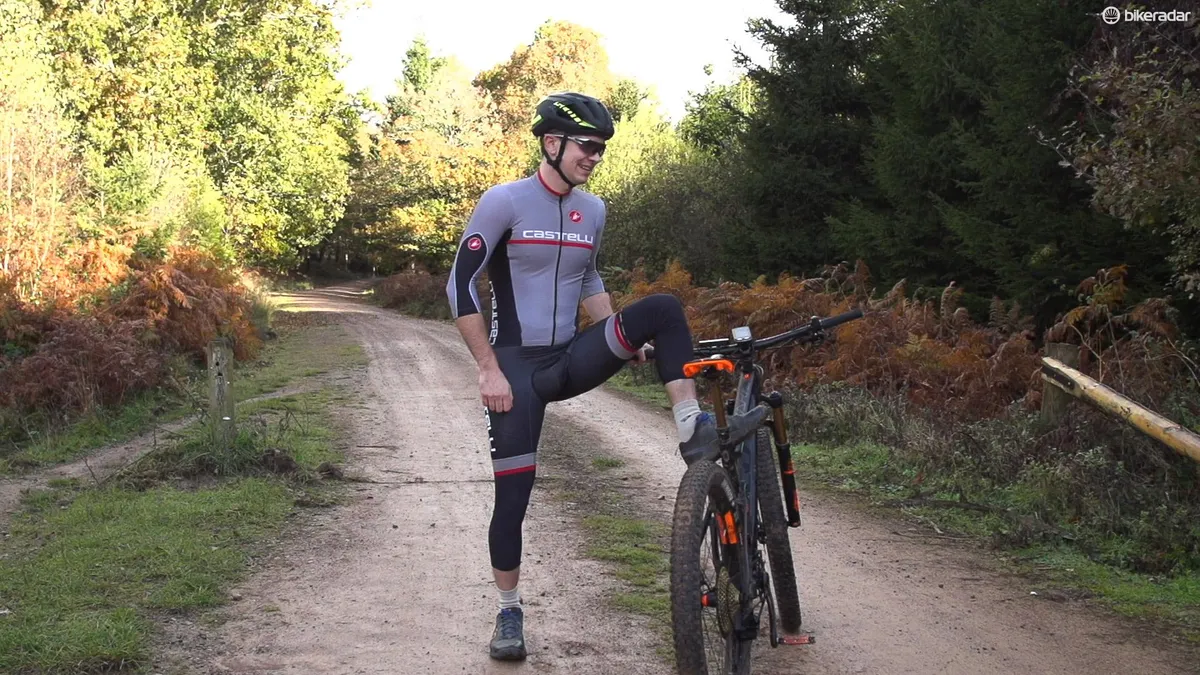In the world of road cycling, aero — that’s aerodynamics for people who are going too fast to say complete words — is king. In everything from bikes to helmets to clothing, trying to slip through the air with as little drag as possible is a priority, with extra slippery fabrics, extreme tube profiles and wind tunnel testing being a major selling point even on bikes not designed to win races.
- Are 27.5+ bikes faster than 29ers?
- Dropper post vs fixed post. Which is faster for XC racing?
- Less is more: why the 27.5 Plus standard is doomed
When it comes to riding bikes in dirt, it’s been less of a consideration. I’m currently unaware of any mountain bike on the market that brags about its aero credentials and only in recent years have we seen lids that tout a wind cheating profile; most of those tend to be repurposed road helmets too.
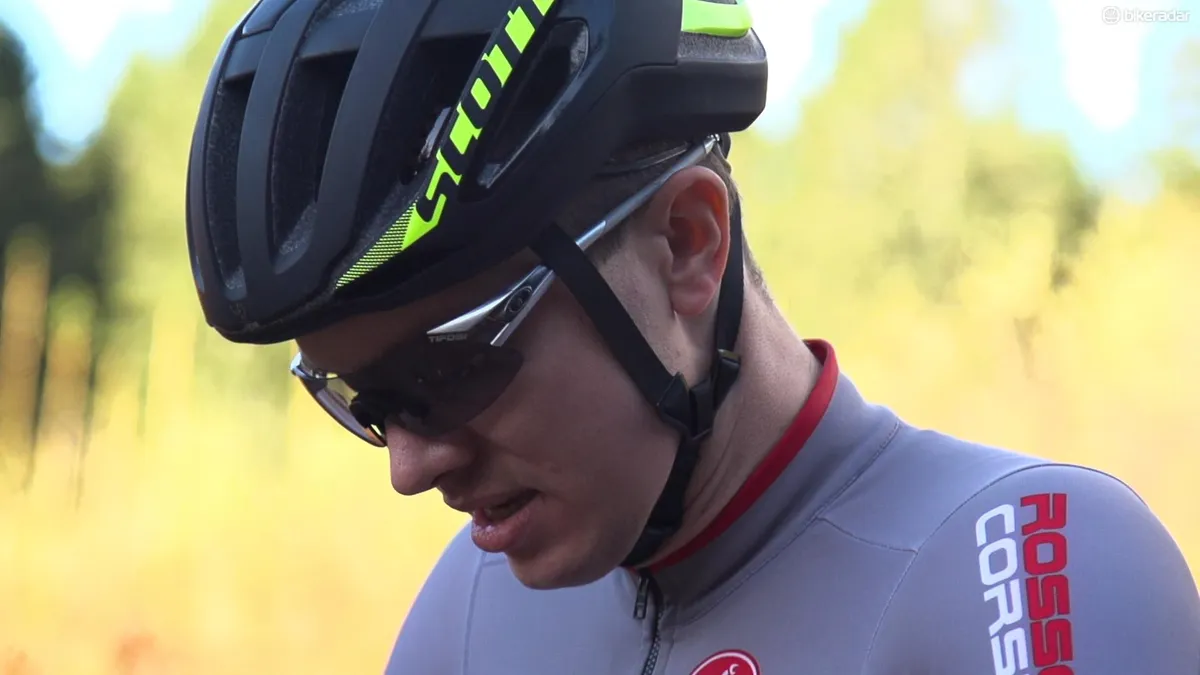
While cross-country racers have traditionally stuck to tight fitting lycra and helmets without peaks, most mountain bikers tend to use baggies whatever discipline they ride. There are some reasons for this. The biggest is obviously fashion. Even at the genesis of the sport the long haired hippy types that thought drifting old beach cruisers down a hill in Marin County would be a laugh chose to wear jeans and flannel shirts, rather than traditional cycling clothing. There was a good reason for that — apart from ensuring a rugged looking legacy — because having thick, baggy clothing afforded more protection from the inevitable crashes that result from riding silly bikes on slippery surfaces.
For the first part of my test I decided to investigate just how draggy different clothing styles are by doing a very simple roll down test on a fireroad
Even in modern times, mountain biking is arguably still more closely aligned with 'action sports' such as snowboarding and motocross rather than road cycling, and so the culture and clothing tends to reflect this. Of course, whether some of the brightly coloured baggy clothing that you see out on the trails is objectively 'cooler' than skin-tight clothing is up for debate; to be honest both are a hard look to pull off when in the company of people who don’t partake in either sport.
Anyway, ever since 2008 “tight fitting clothing” has actually been banned in downhill racing by decree of the UCI, cycling’s governing body. Take a look at the Enduro World Series and you won’t see anyone sporting a skinsuit either, though many of the top riders certainly modify their sponsor’s clothing to make sure there’s not an excessive amount of material.
Obviously, aerodynamic drag increases as you go faster, but it’s not a linear relationship. If you go twice as fast, the drag doesn’t double, it quadruples. The faster you go, the harder you have to try to overcome the drag you create, so it makes a huge amount of sense in any cycling discipline where you spend a lot of time at a high speed.
While road cyclists maintain fairly high speeds consistently, World Cup downhillers can average speeds of 50kph over a run, hit peak speeds of over 70kph and races can be won and lost by thousandths of a second. Minimising drag would inevitably have a significant effect.
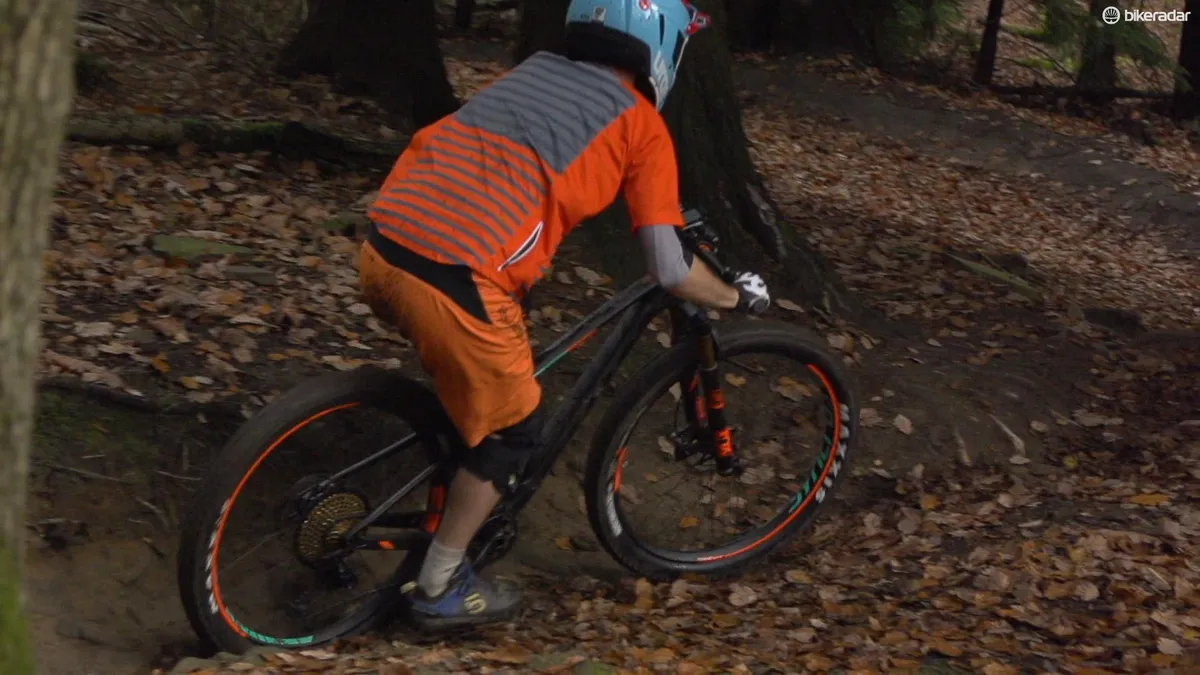
Whatever the rights and wrongs of a sport that’s all about beating the clock, having rules dictated by fashion and the commercial interests of rider’s clothing sponsors got me thinking. Received wisdom states that most mountain bikers don’t go fast enough for long enough to reap the benefits of aero, but I set out to see whether ditching my baggies for skin tight lycra and my peaked trail helmet for a much smoother item would have me bagging Strava KOMs as well as strange looks on my local trails.
null
Part one: the roll down test
For the first part of my test I decided to investigate just how draggy different clothing styles are by doing a very simple roll down test on a fireroad. My first outfit was a proper roady aerosuit from Castelli paired to Scott’s new Centric Plus — a wind tunnel tried-and-tested aero lid that’s actually made for mountain biking. I also wore leg warmers because a) it’s cold in Wales in winter and b) I have extremely hairy legs that I’m unwilling to shave, even for science. I titled this the ‘skinsuit’ set up, for obvious reasons.
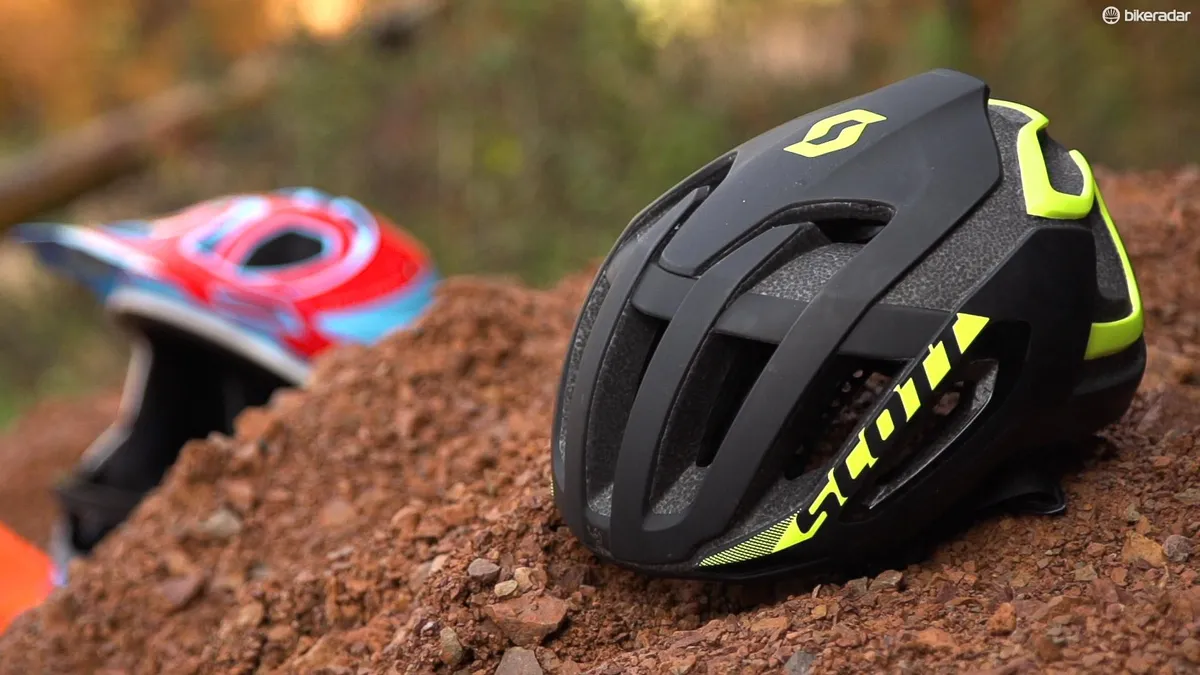
I termed my second outfit the ‘tailored baggies’. I wore a set of Gore Alp-X Pro shorts and matching jersey which, while having a bit of room in them, certainly weren’t overly flappy. I paired those with a set of slimline knee pads from 661 and my trusty Troy Lee Designs A1 trail lid, complete with peak intact.
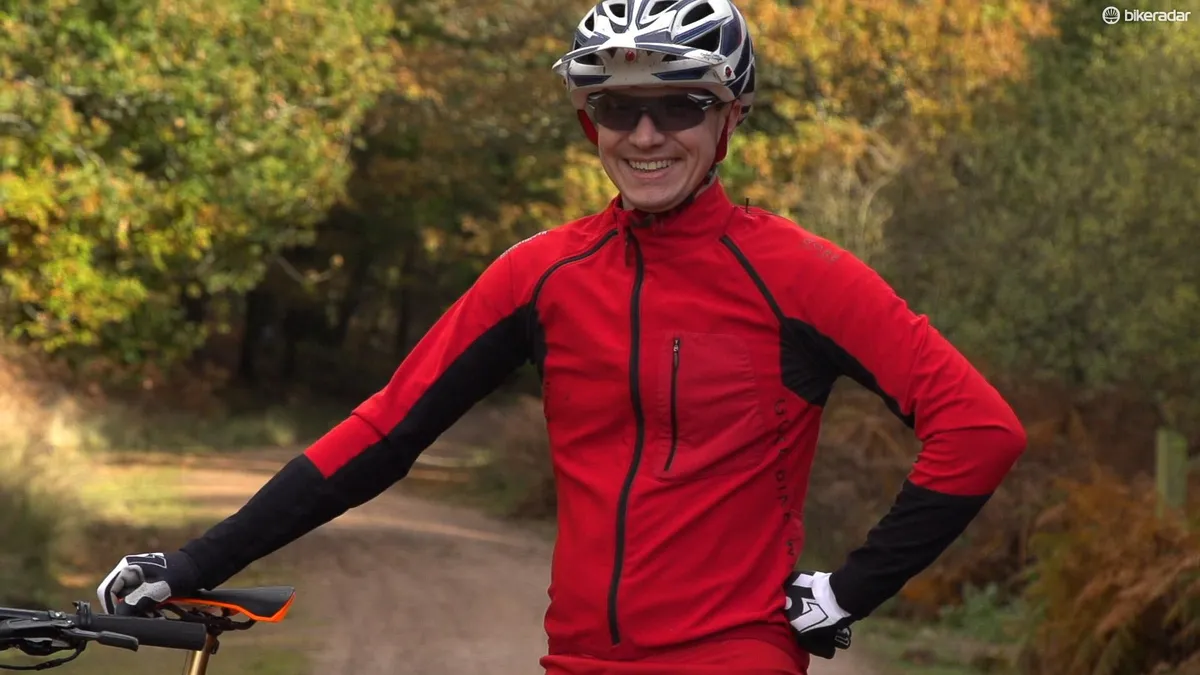
The third and final outfit consisted of shorts and a jersey so loose fitting that nineties' rapper MC Hammer would have been proud, which I called ‘full baggies’. Indeed, the Troy Lee Designs Skyline short and jersey combo was definitely sized using the “he’ll grow into it” school of thought. Sadly, as I’m rapidly approaching middle age this seems unlikely, but in conjunction with a full-face Urge helmet and a set of much bulkier RaceFace kneepads it was designed to provide as much drag as you’d expect from a riding outfit before things got silly.
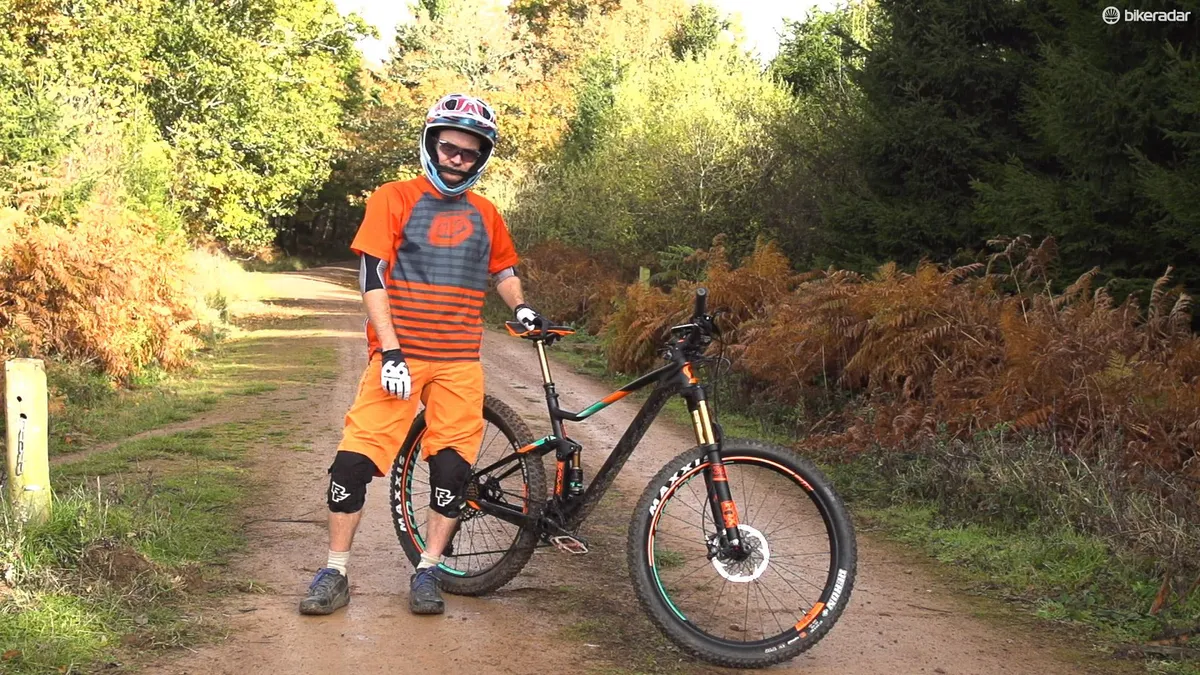
I picked a piece of straight but fairly steep fireroad that was surrounded by trees to minimise any wind interference, even though I conducted the test on a totally still day. I marked a section about 200m long with a starting line scratched into the dirt at the top and a fixed a thin branch across the finishing line that, when I rode over it, would give me feedback through the bars when I crossed it.
For timing, I used a DRC Moto Timer, which has a small remote that you can mount close to the grip, enabling me to trigger it without having to shift position or move my hand from the bars. I also ran Strava on my phone as a backup though, much as I hate to disappoint any segment warriors out there, it’s not consistently accurate enough to use for proper timing duties.
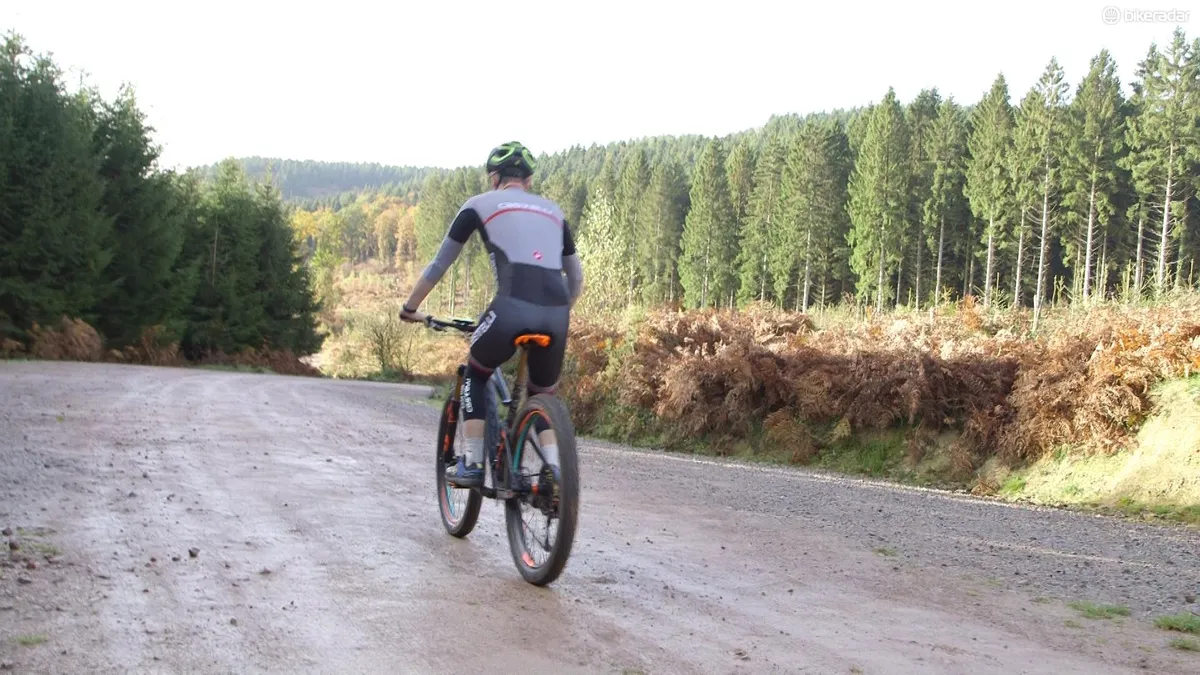
I used my Scott Spark Plus long-term test bike to perform the test. Starting from stationary with my wheel on the starting line, I would stand with one foot on the pedal, release the brake, then up sit on the raised saddle as smoothly and quickly as possible, then place my other foot on the pedal and rotate the cranks backwards until level.
As I used flat pedals, I didn’t need to worry about clipping in, which simplified matters greatly. After a couple of dry runs to ensure my technique was consistent, I began testing. I started with the full skinsuit set up; my logic being that this was likely to be the fastest set up anyway, so any advantage gained by improving technique or change in track conditions wouldn’t skew the end results in its favour.
I repeated the run multiple times and then changed into the tailored baggies, followed by the full baggies. Pleasingly enough the individual results from each group were pretty tightly grouped to the others, indicating that my methodology was reasonably sound, despite a relatively short test track. These results were then averaged to give my final results.
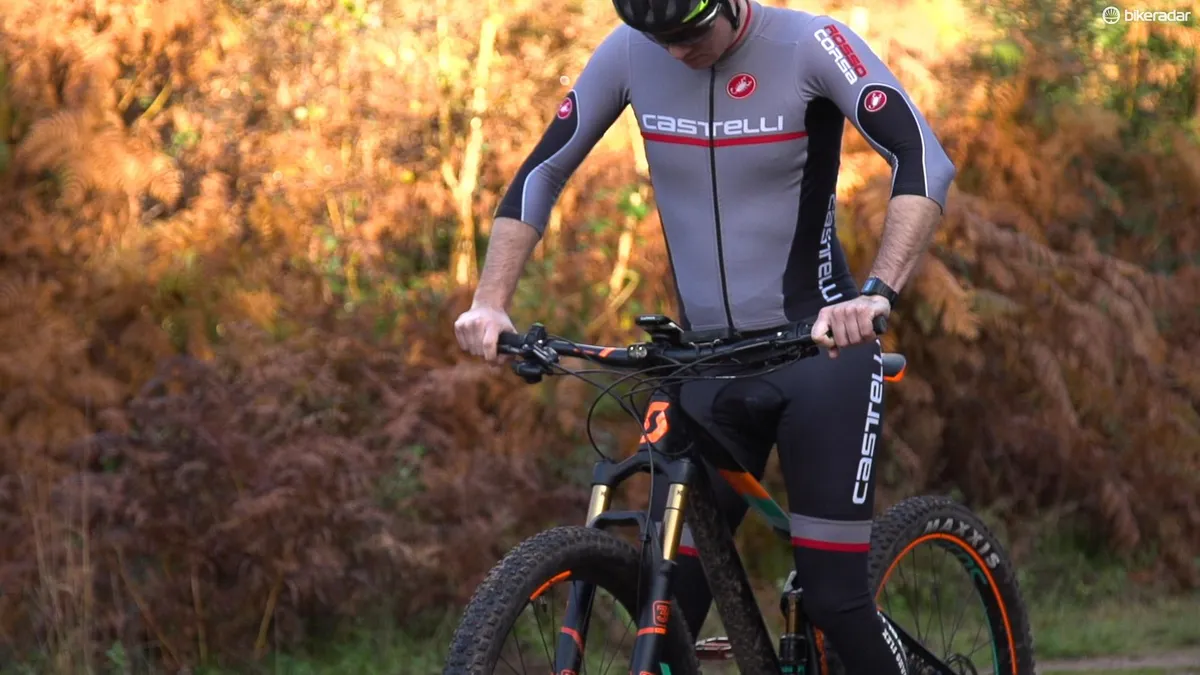
Unsurprisingly, the skinsuit set up was the fastest, averaging 19.52s to complete my course. Next up, the tailored baggies came in at 19.65s — a difference of 0.13s or 0.66%. The full baggies clocked in at an average of 19.85s, a 0.2s or 1% increase on that.
The main difference that I felt when riding in the skinsuit was the absence of wind noise from the helmet or fabric flapping about, something much more noticeable in the baggiest outfit where the shorts flapped around my legs and the back of the jersey puffed out as speed built. In terms of speed at the exit, the skinsuit felt faster, though as BikeRadar’s budget doesn’t extend to a speed gun and I don’t know any friendly policemen (or indeed any policemen), that’s very much a subjective call.
As both the sample size and differences recorded are small, meaning these results don’t stand up to truly scientific scrutiny, they strongly indicate a pattern that a skinsuit is faster than flappy baggy clothing, with the tighter baggy outfit splitting the distance.
That’s hardly groundbreaking — it’s what both the physics and weight of experience point to — but this was just the first part of my test. Sitting bolt upright on the saddle without moving position and riding in a straight line down a fireroad does absolutely nothing to accurately represent what you do when you’re actually riding a descent, for example. When you’re riding you move about on the bike, constantly changing riding position. So in that situation does the drag from your clothing still make a difference? If so, is it significant enough to consider ditching ?
Part two: the offroad test
With that in mind, it was on to part two, namely riding a bike offroad. For this part of the test I ditched the tailored baggy outfit and just used the two extremes; the skinsuit and the full baggies.
To complete my test I picked a roughly minute-long section of trail at the Forest of Dean. To help remove any variance that’d come from pedalling, but still go fast enough to be able to ride it at a reasonable speed, I chose a section that would allow me to roll into the trail proper from a standing start on a section of downhill fireroad. The trail itself started off with a few small jumps and drops followed by a sequence of linked bermed corners before hitting some more jumps, then a fast open section into a rough, rooty section with a technical line though it, before exiting onto fireroad and the finish line.
It certainly wasn't a hugely extreme piece of trail, just representing a fairly typical enduro-style descent that I would be able to ride consistently at a fast pace, being able to hit the same line over and over, even in the technical sections. This also meant that neither familiarity nor fatigue should skew the results too much.
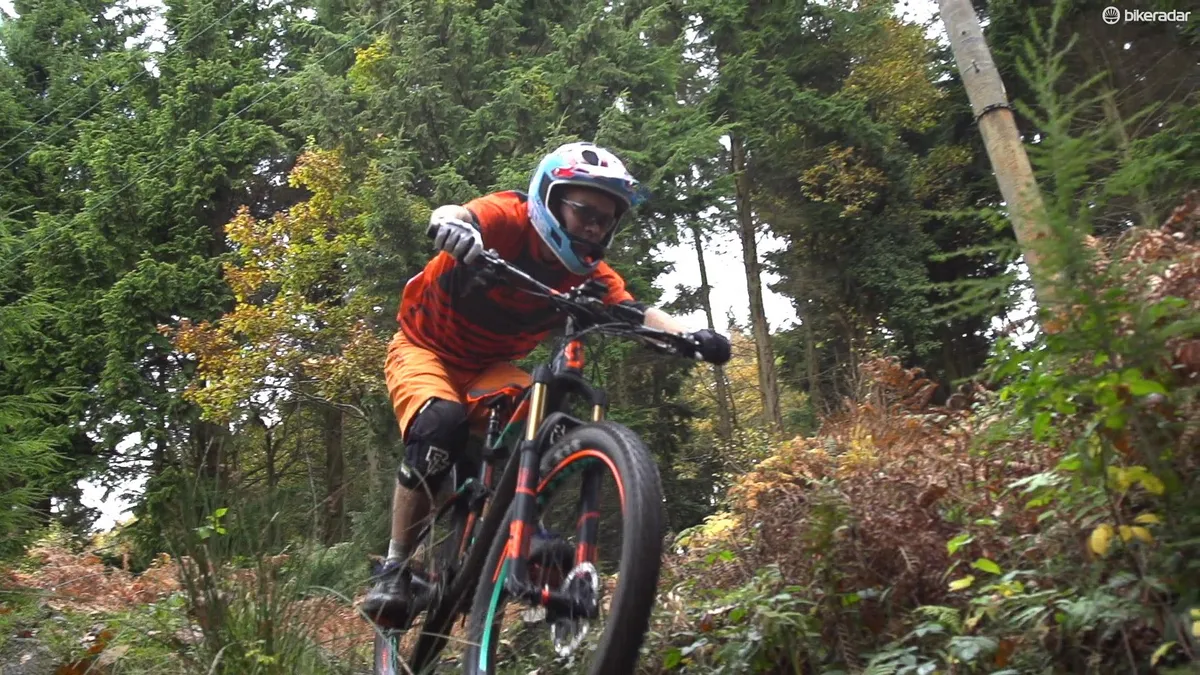
Despite being very familiar with this particular piece of trail, I rode it a couple of times to familiarise myself with the conditions on the day, then it was into my windcheating getup to start off.
It was an extremely still day, so conditions shouldn’t have had a significant effect on the results. I did three runs in this set up, ensuring a small rest after each climb back up, then I switched into my baggy outfit before repeating the exercise.
Subjectively, in the skinsuit set up I felt like I was going faster, launching further off drops and jumps and having to brake much harder into the technical sections. While it’s possible that some of that sensation may have been due to feeling (and essentially being) more exposed with less between the elements and me, the times backed it up. Again, the results for each outfit had a decently tight grouping, helping to indicate that a relationship exists between time and outfit worn, rather than an external factor.
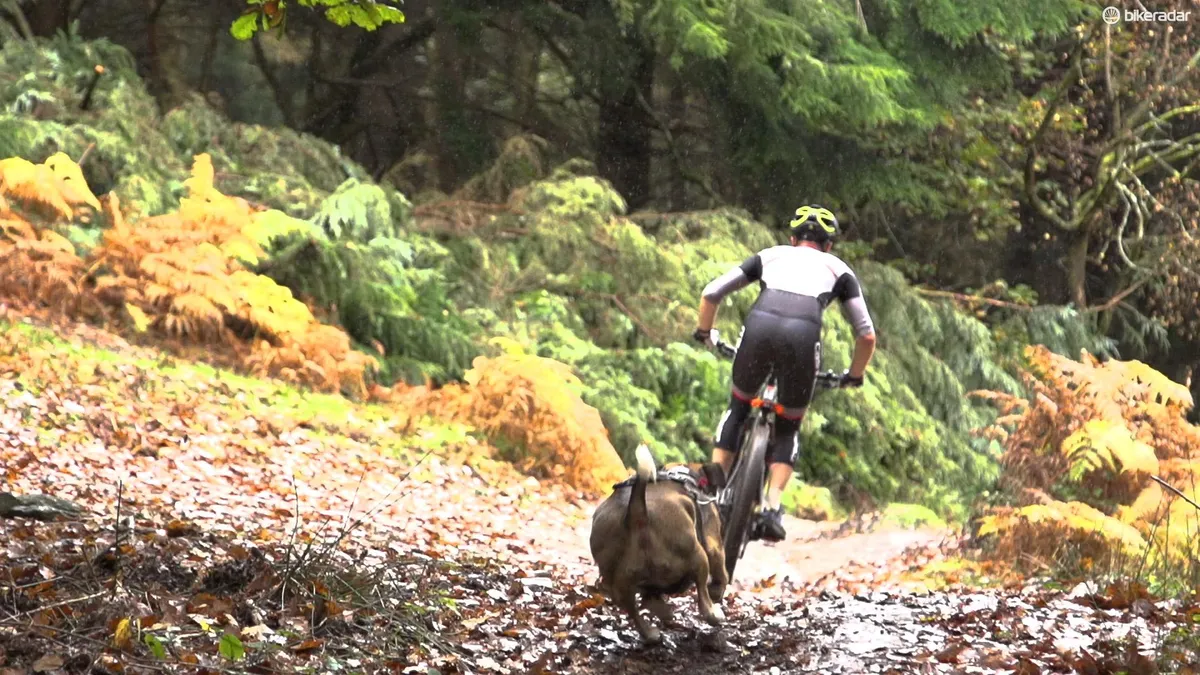
In the baggy outfit, I averaged 1.08.31s on the run compared to 1.06.18s in the skinsuit, making the latter 2.13s quicker. That’s 3.1%, a pretty significant difference on a relative short run, assuming the accuracy of the results is great enough to draw these conclusions.
Again, it’d be fairly simple to poke holes in the results from a scientific standpoint, but as far as bike-science goes, I’m pretty satisfied that if you choose tight lycra and a peakless lid over really baggy shorts, top and a full face, you’ll go faster for no extra effort. It’s also very interesting that this result hints that there may be an even greater speed advantage to be had from reducing drag when actively riding down a descent rather than simply sat in a fixed position, though this is rather tenuous considering the sample size.
Either way, if you extrapolate the time difference in my test run over a longer or faster descent, my result indicates that you’d likely see an even bigger advantage in being aero. When an enduro race stage can easily last 15 or so minutes, gaining a couple of seconds per minute could make a real difference to your final placement, especially if it comes at no energy cost.
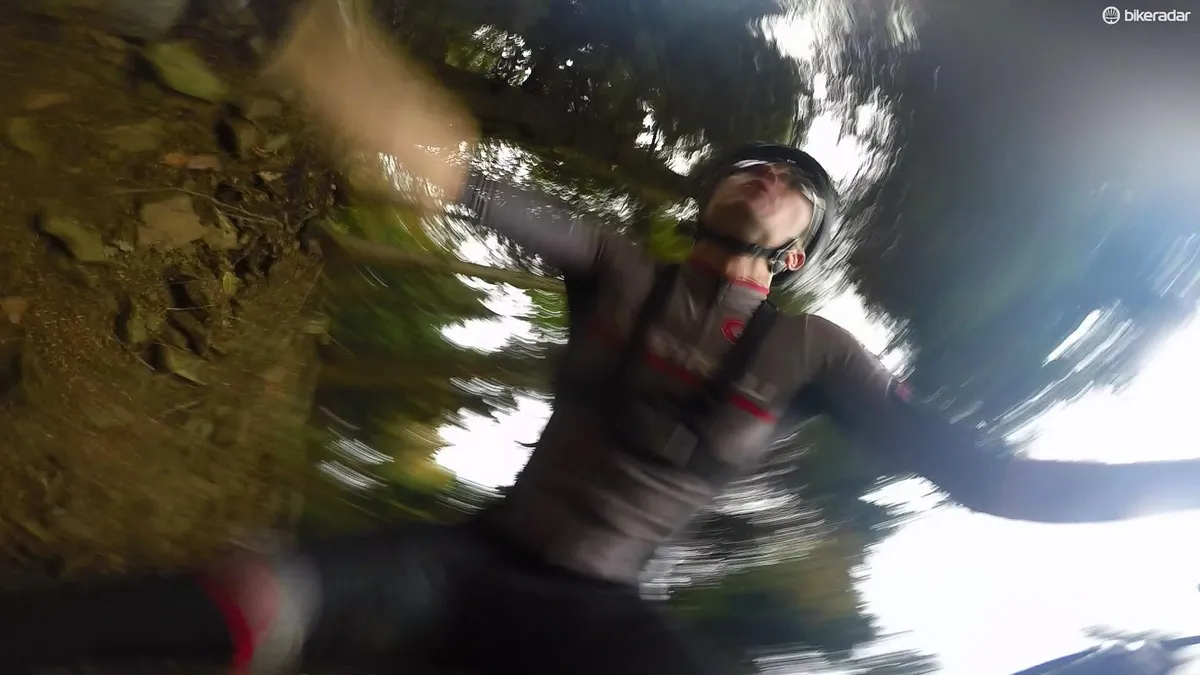
Of course, this whole exercise is somewhat in vain when it comes to real world use. Cross country racers already do their best to reduce aerodynamic drag with what they wear while downhillers are banned from taking full advantage of the gains that could be had thanks to the UCI's rulebook. I very much doubt that top enduro racers are going to start riding in full lycra getups; it’d do little for the image of the sport.
I did reach out to Chris Ball, head honcho of the Enduro World Series for his take on the matter. He has this to say: "We’ve not got any regs on clothing at all. Some events, due to local legalities, have various protection rules such as spine protection and gloves, but otherwise we impose no regulation on clothing. The riders have definitely moved more and more to tighter and more technical clothing in recent years though, which I think is a sign of the sport professionalising and the smaller details being considered more and more. It’s emerging more as a physical discipline too, which demands a lot from equipment, both on the bike and rider. So, we don’t tend to ever see lycra, but if you look at most of the pros outfits now you’ll certainly see very high lycra content fabrics and tailored shapes."
So, what should we take away from this? Well, if you just want to go fast, then clothing does matter
So while enduro racers aren't going to wear flappy kit, the return of proper skinsuits seems unlikely. I doubt clothing sponsors would be overjoyed if that did happen; I imagine the market for a team issue skinsuit is rather limited in the mountain biking world. In both enduro and DH, full face helmets are mandatory as well; I’d need to do a load more testing to see how much of the result is down to clothing and how much is down to the helmet.
Obviously, in DH most riders are aware of the edge that the right kit gives from an aero standpoint. That’s why flappy race gear is extremely rare there as well, with many racers choosing to tailor their tops and shorts to be as tight as possible while still staying on the right side of the rules.
Other benefits
As I found when shooting the video for this feature, wearing a skinsuit has a distinct disadvantage when mountain biking; namely that it really hurts when you crash. With only a super thin single layer of fabric between you and the ground, there’s not even the barest hint of cushioning. Baggy clothing also allows a bit of slide between layers when you hit the ground too, which is likely to help reduce abrasion. When I hit the ground in my skinsuit, nothing like that happened, with rather predictable consequences.
So, what should we take away from this? Well, if you just want to go fast, then clothing does matter. Even if you’re not into wearing lycra, going for more fitted clothing is still likely to pay dividends. Of course, it’s unlikely to turn you from a mid-pack finisher to a championship contender and therein lies the rub; you need to be pretty confident to rock a skinsuit at an enduro race if you’re not going to follow it up by winning the thing. Add in the lack of protection and other practical considerations and it’s probably not worth going the whole aero hog unless you really, really want to pip a Strava segment rival to the post by a second or two.
It also goes to show that even at the highest levels of enduro and downhill racing, fashion is more important than all-out speed. That’s not ideal for being taken totally seriously as a competitive sport — after all, what athlete would willingly give up free speed — but when it comes to mountain biking as a sport that attracts new participants and sponsors that want a piece of the action sports marketing pie then it’s probably a wise move.
It also raises some interesting future directions for testing on this subject. What difference would making your bike itself more aero have? Even at a basic level, preventing cables flapping about and using some form of fairing-type device to help smooth air flow over the frame and wheels should have some effect, but just how much? (I’m thinking clingfilm might be the budget solution to that one.)
What about backpacks? The UCI has introduced regulations on both size and placement of those in competitive road cycling to ensure they aren’t being used as an aerodynamic aid. Can I use that other road cycling philosophy of marginal gains to combine all these things and be faster by a significant amount?
Finally, my road-riding colleagues also told me an interesting fact they'd picked up: for the most part the gains in speed to be had from kit pales in significance when compared with the very simple matter of riding position. Getting into a tuck on fast sections makes a much bigger difference than losing a peak or wearing extra slippery pants. Either way, all this point to a rich seam of investigation and I plan to keep mining it, even at the expense of my own dignity.
